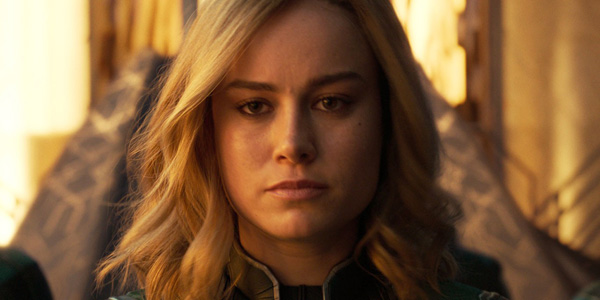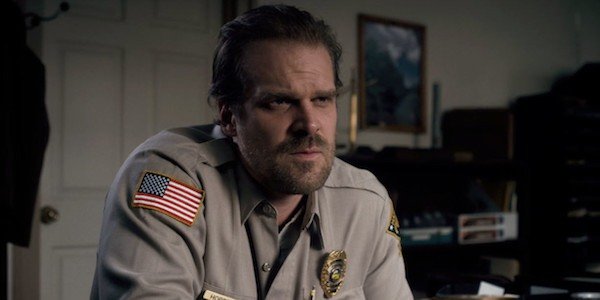7 Period Movies Marvel Should Make In The Future

As long as the Marvel Cinematic Universe continues to exist it will consistently produce contemporary stories – but it’s been shown that the occasional period piece can be a real treat for audiences. We’ve only really seen a couple of examples from the franchise so far, including Joe Johnston’s Captain America: The First Avenger and Anna Boden and Ryan Fleck’s Captain Marvel, but there are few that would disagree that the details in the settings and aesthetics of those features set them apart from the 20-plus other offerings from Marvel Studios.
Obviously period storytelling presents some specific challenges for a continuity-centric franchise, as filmmakers have to create explanations for keeping characters around for decades, and reasons why audiences haven’t previously heard about the adventures. All the same, they present flavorful stylistic opportunities that can be incredibly fun to explore. This in mind, we’ve taken a trip back through history (skipping the already-done 1940s and 1990s), and formulated ideas for potential new Marvel big screen stories – starting with the decade that everything started with Timely Comics…
1930s – Namor The Submariner
One could make the argument that Marvel Comics was built on the backs of three heroes: Captain America, Human Torch (the android, not Johnny Storm), and Namor The Submariner. They were among the first heroes introduced in the aforementioned Timely Comics, and their pages helped shape the superhero world as we know it. The first two have appeared in the MCU – the former as a primary hero, the latter as an Easter egg in Captain America: The First Avenger – but, sadly, certain rights complications have prevented us from seeing a big screen version of Namor. Right now we don’t know what the future will hold for the character, but if it were up to us, we would get to see a movie featuring him in the decade he was created: the 1930s.
The DC Extended Universe has already beaten the Marvel Cinematic Universe to the punch when it comes to undersea adventure, as Aquaman is the biggest hit the brand has ever released, but that doesn’t mean a Namor The Submariner movie couldn’t still work. Not only does there still exist plenty of material for land vs. sea conflict, but the early origin could set up the Atlantian King/hero/anti-hero/villain for appearances in some other potential period stories (especially what we have in mind for the 1960s).
1950s – Man-Thing
Superheroes have been a staple of comic books for decades, but during the 20th century there was a lull in their popularity, and one particular genre simultaneously hit its stride. That period was during the late-1940s and early-1950s and the genre was horror. Marvel’s predecessor, Atlas Comics, was deep into this game, scaring audiences with monsters in the pages of Amazing Mysteries and Marvel Tales – and it’s in recognition of this history that the Marvel Cinematic Universe could make an excellent Man-Thing feature.
Not to be confused with DC Comics’ Swamp Thing (which was introduced around the same time), Man-Thing is a creature that lives in the Florida Everglades – formerly a scientist forced to dose himself with his own secret serum while being pursued by terrorists. This could be a very different kind of film for the Marvel Cinematic Universe, specifically an opportunity to dig into a genre that has not yet been explored by the studio, and there is room to be heavily inspired by 1954’s Creature From The Black Lagoon.
1960s – The Fantastic Four
With 20th Century Fox being bought by the Walt Disney Corporation, Marvel Studios will soon have the ability to create their own version of the Fantastic Four, and redeem the big screen legacy of Marvel’s first family. In doing this, the company could certainly go the easy route and introduce them as a team of new heroes ready to join the fight against evil alongside the Avengers and the Guardians of the Galaxy – but if they were to go the period piece route there could be some real fun to be had. (With a hat tip to Peyton Reed – who we very much hope someday gets to execute his vision.)
Like Namor and Captain America, this would be another case where the characters are introduced within the same decade they made their debut on the page, as the Fantastic Four made their debut in 1961. What would be wonderful about this version is not only the possibility of differentiating itself from the previous cinematic adaptations, but also exploring the beautifully weird 1960s sci-fi aesthetic, taking notes from classics like 2001: A Space Odyssey, Fantastic Voyage, and Planet Of The Apes. As for where the characters have been in the decades since, it’s very easy to believe that they went off on some kind of space exploration mission and never returned, got trapped in another dimension, or somehow got erased from existence because of a time travel incident.
1970s – Blade
Basically being half-vampire, Blade a.k.a. Eric Brooks ages at a much slower rate than most Marvel heroes, which makes him a perfect candidate for period storytelling. It’s very easy to establish that the guy has been hunting the undead for decades without having to recast or use advanced makeup/effects when he makes contemporary appearances. Add in the fact that he was created in 1973 by Marv Wolfman and Gene Colan to hunt Dracula, and you have a recipe for an awesome new Marvel Cinematic Universe film.
Like Man-Thing, this is another opportunity for the franchise to dip into the horror genre, and also distance itself from the version of the character we’ve already seen from a different continuity. Given the era, perhaps this version of Blade could have the affection of being like Shaft with vampire hunting – maybe even straight-up having him travel to Transylvania to hunt Dracula. In the hands of the right filmmaker that could be a blast.
1980s – The Astonishing Tales Of Ant-Man And The Wasp
This entry is a bit different than every other one in this feature as it centers on characters with whom we are already familiar. No, I’m not talking about Scott Lang and Hope van Dyne – I’m talking about Hank Pym and Janet van Dyne. Portrayed by Michael Douglas and Michelle Pfeiffer, we know from the previous Ant-Man movies that they were spies working together for S.H.I.E.L.D. during the Cold War, and a 1980s-set prequel film titled something along the lines of The Astonishing Tale Of Ant-Man And The Wasp could do exactly that.
One of the “drawbacks” of using established characters is that the project would have to make heavy use of the impressive de-aging technology that Marvel has been employing in recent years, but there’s every reason to be confident that it could be done. After all, not only is the digital work done on Samuel L. Jackson in Captain Marvel absolutely flawless, but we’ve already seen what magic can be done with both Michael Douglas and Michelle Pfeiffer in the previous two Ant-Man films.
2000s – She-Hulk
While the first Marvel Studios films were released in 2008 - Iron Man and The Incredible Hulk – technically we have not yet seen a 21st century aughts story in the MCU. Given the way things line up in the continuity, the former is set in 2010, while the latter unfolds in 2011. That on the table, however, a She-Hulk film set during the previous decade may still be possible. After all, fans will remember that the first Hulk story in the Marvel Cinematic Universe is not an origin story, and there is a period of four to five years that we don’t know much about in between Bruce Banner’s disastrous gamma experiment and where we first caught up with him. This is where Jennifer Walters’ tale could start.
It is possible that we could meet the future She-Hulk at some point this mystery time, with an accident leading her to get a blood transfusion from her on-the-run cousin, Bruce Banner. The result is that she experiences a different form of his Hulk condition – transforming into a powerful green giant, but keeping her personality and intelligence. Given the trouble Banner experiences as a fugitive, she tries to control her transformations and live a normal life… all while the age of heroes is just about ready to bloom.
2099 – Marvel 2099
Period pieces aren’t necessarily relegated to the past, and Marvel Comics has already provided the movies with an interesting roadmap towards looking at the distant future. Marvel 2099 was an imprint published throughout the 1990s that had writers and artists on a wide variety of books telling stories set approximately 100 years in the future. This included new versions of Spider-Man, the X-Men, Hulk, the Fantastic Four, and more, and all of them could possibly come together in a different kind of Marvel Cinematic Universe event feature.
There is enough existing Marvel 2099 source material that Marvel Studios could use for an entire Phase’s worth of features, but assuming that won’t happen it would be cool to use one massive blockbuster to let audiences peek into the highly advanced world. You could use time travel as an entry point into the story, with a contemporary character being hurtled into the distant year, but from there fans could be introduced to a completely different vision of the MCU that has been altered by all the events that have already been depicted.
What do you think of these ideas? Do you think they would work? Do you have ideas of your own? Hit the comments section below with your thoughts, and check out Captain Marvel in theaters this Friday, March 8th.






